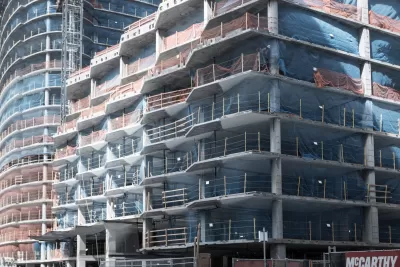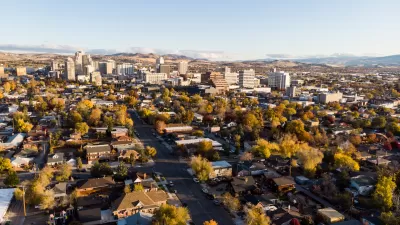A new working paper adds another perspective to the debate about easing zoning regulations to address the affordable housing crisis.

Nolan Gray writes that new research from Evan Mast of the W.E. Upjohn Institute for Employment Research offers empirical evidence of the longer-term effects of upzoning on housing affordability. The working paper provides new insight into the robust debate, including Richard Florida’s look at a recent paper by Andrés Rodríguez-Pose and Michael Storper.
Mast’s research takes a closer look at filtering, the process by which newer housing frees up older, less expensive housing. His analysis of housing data from 12 U.S. cities includes tracing back household moves, what he calls a "migration chain," says Gray:
His model suggests that for every 100 luxury units built in wealthier neighborhoods, as many as 48 households in moderate-income neighborhoods are able to move into housing that better suits their needs, vacating an existing unit in the process. Somewhere between 10 and 20 of these households are coming from among the city’s lowest-income neighborhoods, vacating units and reducing demand where housing is most likely to be affordable for working families.
While Gray notes that the upzoning debate is far from resolved, these findings could play an important role in developing strategies and policies to tackle the affordable housing problem. "For starters, the case against allowing new market-rate housing in high-income neighborhoods would be considerably weakened. And, as Daniel Herriges points out over on Strong Towns, it could also call into question well-meaning policies that suppress the construction of new housing, such as inclusionary zoning."
FULL STORY: How Luxury Units Turn Into Affordable Housing

Alabama: Trump Terminates Settlements for Black Communities Harmed By Raw Sewage
Trump deemed the landmark civil rights agreement “illegal DEI and environmental justice policy.”

Planetizen Federal Action Tracker
A weekly monitor of how Trump’s orders and actions are impacting planners and planning in America.

Why Should We Subsidize Public Transportation?
Many public transit agencies face financial stress due to rising costs, declining fare revenue, and declining subsidies. Transit advocates must provide a strong business case for increasing public transit funding.

Understanding Road Diets
An explainer from Momentum highlights the advantages of reducing vehicle lanes in favor of more bike, transit, and pedestrian infrastructure.

New California Law Regulates Warehouse Pollution
A new law tightens building and emissions regulations for large distribution warehouses to mitigate air pollution and traffic in surrounding communities.

Phoenix Announces Opening Date for Light Rail Extension
The South Central extension will connect South Phoenix to downtown and other major hubs starting on June 7.
Urban Design for Planners 1: Software Tools
This six-course series explores essential urban design concepts using open source software and equips planners with the tools they need to participate fully in the urban design process.
Planning for Universal Design
Learn the tools for implementing Universal Design in planning regulations.
Caltrans
Smith Gee Studio
Institute for Housing and Urban Development Studies (IHS)
City of Grandview
Harvard GSD Executive Education
Toledo-Lucas County Plan Commissions
Salt Lake City
NYU Wagner Graduate School of Public Service





























